If you are looking for a cuisine that is rich, hearty, and diverse, look no further than German food.
Germany has a long and varied culinary history, influenced by its regional differences, neighboring countries, and cultural traditions. Whether you are craving meat, cheese, bread, or beer, you will find something to satisfy your taste buds in Germany.
But how to choose from that variety of delicious German food?
We decided to bring together the dishes that we love the most. Perhaps not the most popular or well known items in the world, just the first 10 tasty recipes that we immediately think of when we hear “German food”.
So you will probably think: why don’t I see this or that dish?
Sauerkraut, Obatzda, Kaiserschmarren, Eisbein, Pfefferhaxe, Brettljausn, Brotzeit, Brezen, Nürnberg sausage, Weisswurst, roast duck, suckling pig, Himmel un Ääd, Steckerlfisch, Gulaschsuppe, Schmalznudeln…
The list of classic German foods is endless and picking 10 was pretty hard already, but we did it!
Besides, lots of German dishes are also Austrian classics, and vice versa.
Let’s look at some of the most typical German food dishes that we always have to eat when we visit Germany.
Grab your fork and knife, and let’s dig in!

What is German Food?
German food is not easy to define, as it varies greatly from region to region.
However, there are some common elements that you can find in most German food dishes.
A typical German meal often consists of a type of meat, sauerkraut or potatoes as a side dish, and some kind of sauce. Vegetables are often served in casseroles, soups, and side dishes. Some common German vegetables include carrots, spinach, peas, asparagus, beans, tomatoes and cucumbers.
German food is also known for its breads, pastries, cakes and desserts.
Germany has more than 300 types of bread, ranging from dark rye breads to soft pretzels. Some of the most popular German pastries are strudels, kuchen (cakes), stollen (fruit bread), and lebkuchen (gingerbread). German desserts are usually sweet and creamy, such as käsekuchen (cheesecake), schwarzwälder kirschtorte (black forest cake), and spaghettieis (ice cream shaped like spaghetti).
Another important aspect of German food is beer.
Germany is famous for its beer culture, and has more than 1,300 breweries producing over 5,000 types of beer.
Some of the most popular styles of German beer are pilsner, weizen (wheat beer), dunkel (dark beer), helles (light beer), and bock (strong beer). Beer is often served with snacks such as Wurst (sausage), Brezel (pretzel), or Käse (cheese).
10 Must-Try German Dishes
With so many delicious options to choose from, it can be hard to decide what to eat in Germany.
To help you out, here are 10 classic and tasty German dishes that you should not miss.
How many of them have you tried before?
Kartoffelsalat
A German potato salad is a warm potato salad, German-style!
Slices of boiled potato are tossed in a warm, tangy-sweet bacon vinaigrette while hot so they absorb the flavour. They are then showered with crispy, golden bacon bits and hit with freshness from dill and green onion.
It is made with vinegar, bacon, and onion and can be served warm, lukewarm or cold.

Schnitzel
Schnitzel is one of the most famous German dishes, and for a good reason.
It consists of a thin slice of pork or veal that is tenderized, coated with flour, eggs, and breadcrumbs, and then fried until golden and crispy. Schnitzel is usually served with a lemon wedge or lingonberry sauce on the side.
Schnitzel is best enjoyed with a side of German potato salad and a pilsner beer or a glass of white wine. You can find schnitzel in most traditional restaurants in Germany, especially in Bavaria and Swabia.
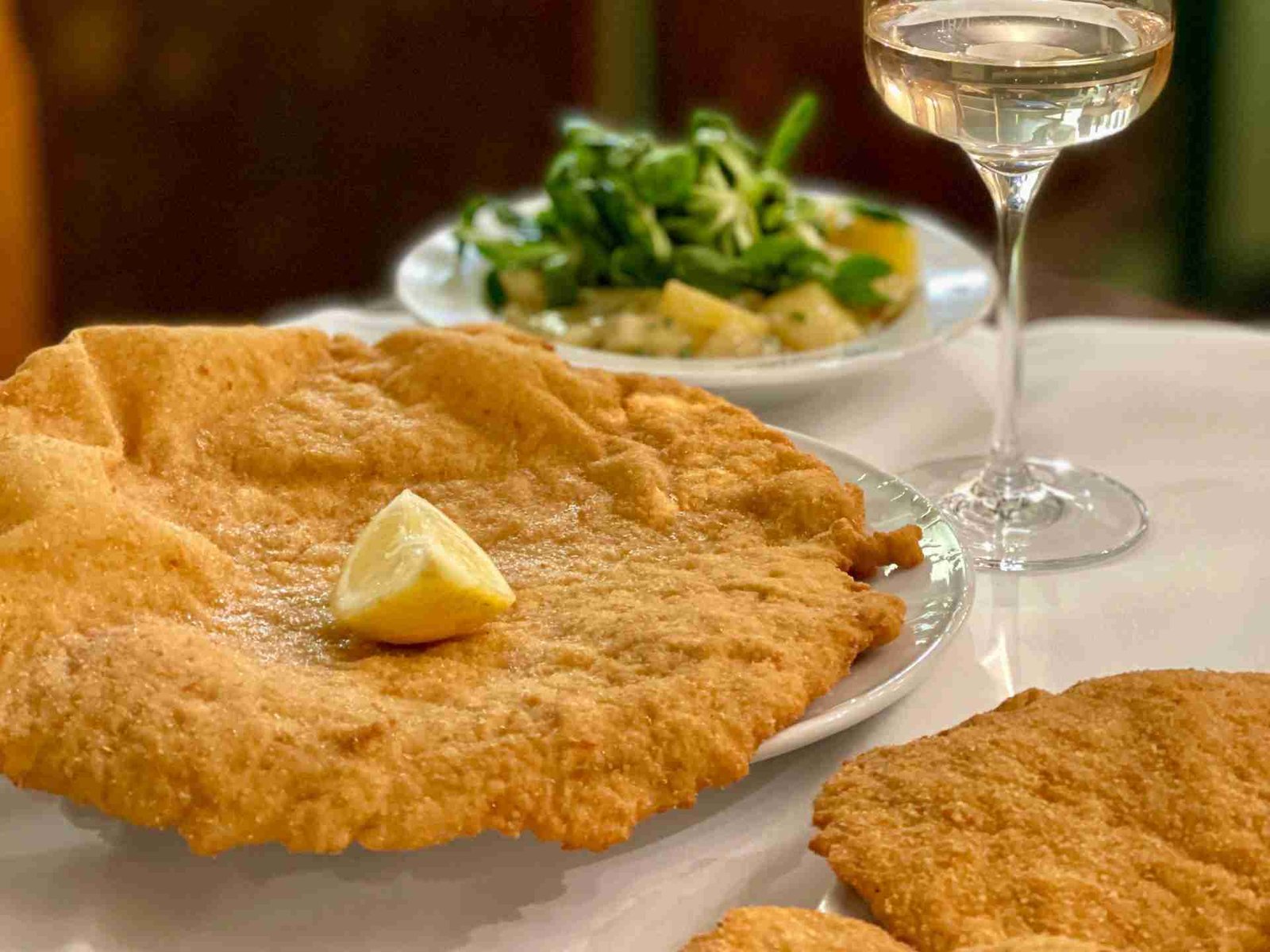
Currywurst
Currywurst is a street food classic that originated in Berlin after World War II.
It consists of a steamed or fried sausage that is cut into bite-sized pieces and smothered with a ketchup-based sauce mixed with curry powder. Currywurst is usually served with a bread roll or fries.
Currywurst is best enjoyed with a cold bottle of cola or beer. You can find Currywurst stalls all over Germany, but especially in Berlin where it is considered a cultural icon.
Read my blog post about German Currywurst as well!

Käsespätzle
Käsespätzle is a cheesy pasta dish that is popular in cozy Munich pubs in winter.
It consists of Spätzle (small egg noodles) that are mixed with grated cheese such as emmentaler or gruyère and topped with fried onions. Käsespätzle is often baked in the oven until bubbly and golden.
Käsespätzle is best enjoyed with a green salad or sauerkraut, and a glass of weizen beer. You can find it in most restaurants in southern Germany, especially in Bavaria and Baden-Württemberg.
Check my recipe for Käsespätzle cheese noodles here!
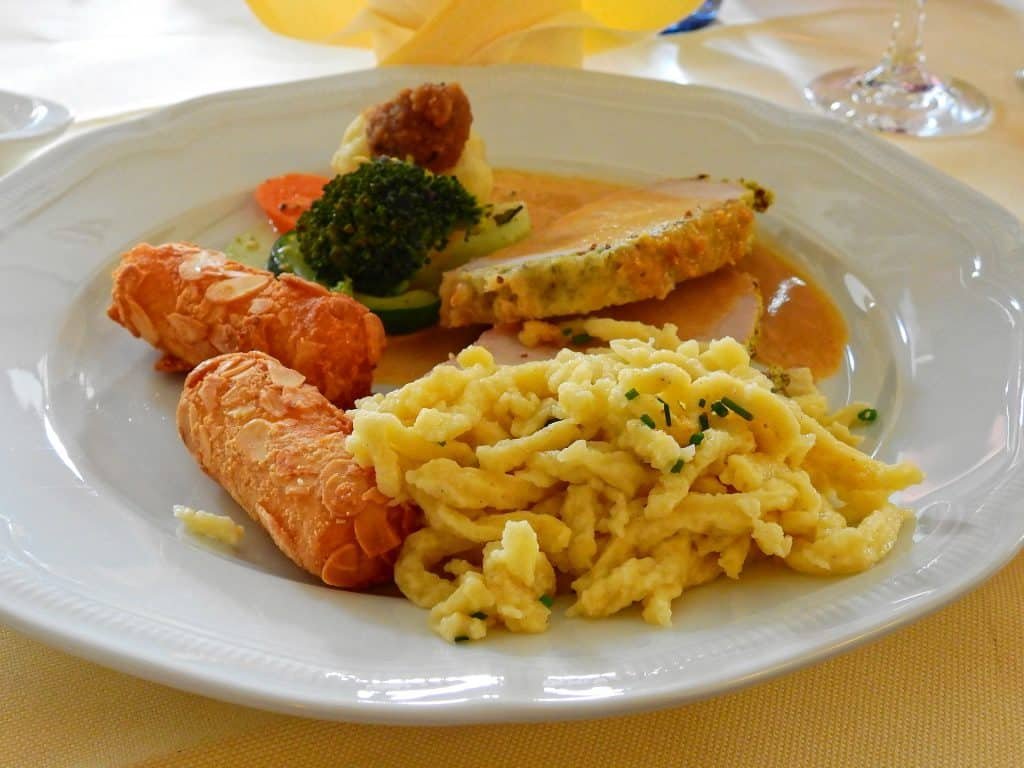
Wurstsalat
Wurstsalat is a tart sausage salad prepared with distilled white vinegar, oil and onions.
A variation of the recipe adds strips of pickled gherkin. It is generally made from boiled sausage like Lyoner, Stadtwurst, Regensburger Wurst or Extrawurst. It is a meaty German salad made from chopped sausage, cheese, pickled gherkins and onions. It is served with a simple vinaigrette dressing.
Check my recipe for Wurstsalat cheese noodles here!
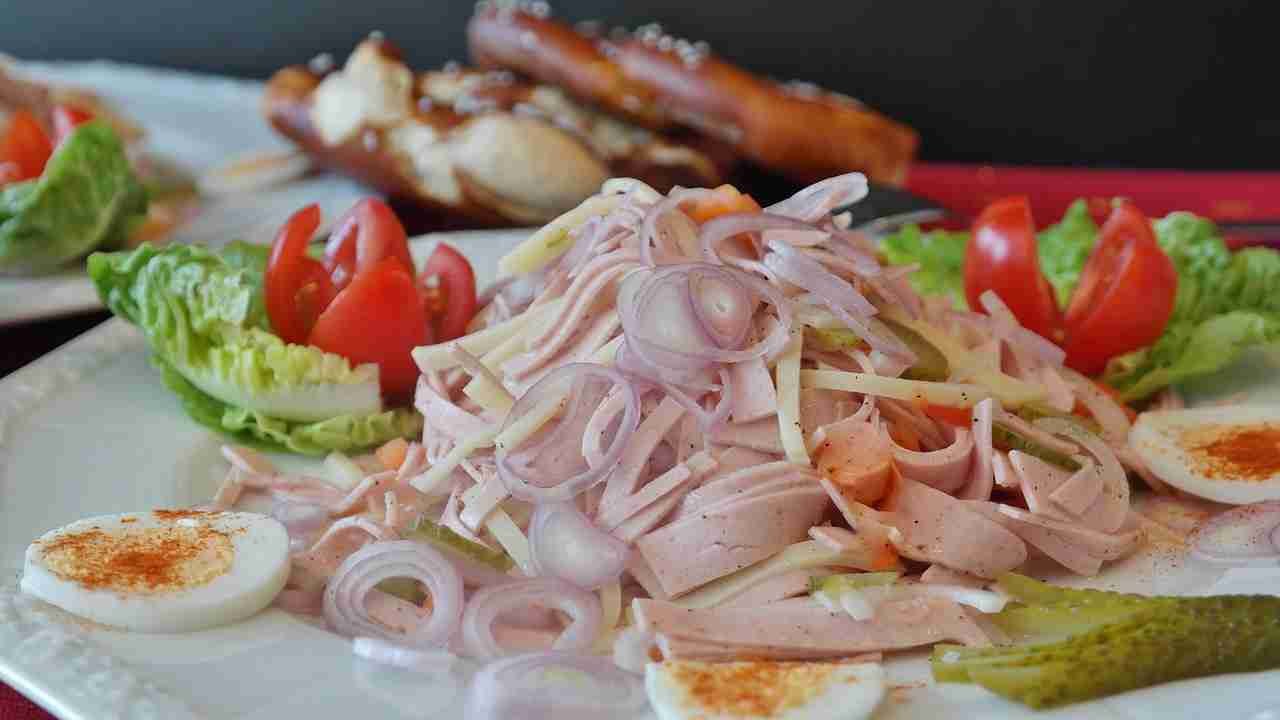
Leberkäse
Leberkäse is a traditional German meat dish made from finely ground pork, beef and bacon, mixed with spices and seasonings.
It is baked in a loaf-shaped mold until it forms a crispy brown crust on the outside, resulting in a smooth and firm-textured meatloaf-like creation.
Served as a sandwich or part of a meal, Leberkäse is commonly enjoyed warm or at room temperature, accompanied by mustard, sauerkraut, or bread rolls, offering a flavorful and hearty culinary experience.
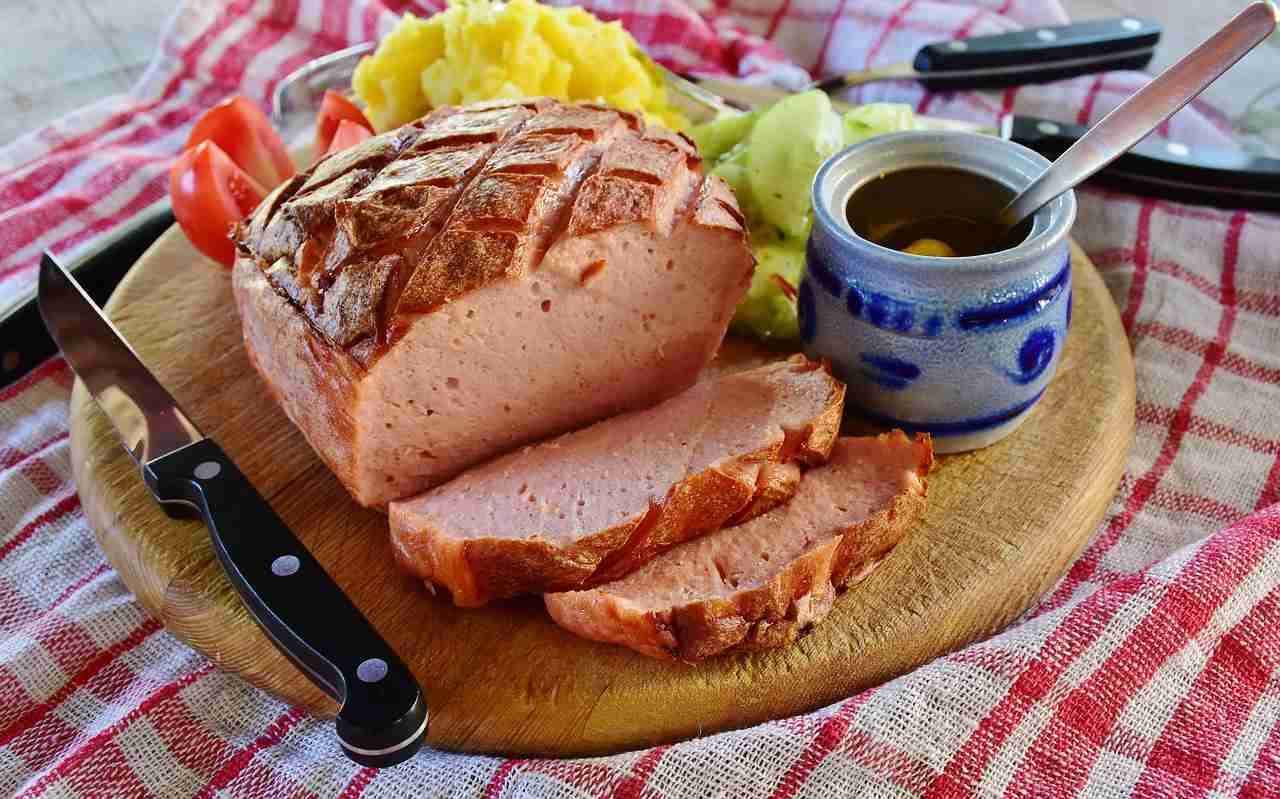
Sauerbraten
Sauerbraten is a traditional pot roast that dates back to medieval times.
It consists of beef or venison that is marinated for several days in vinegar, wine, spices and herbs. The meat is then braised until tender and served with a rich gravy made from the marinade. Sauerbraten is usually accompanied by dumplings, noodles or potatoes, and red cabbage or apple sauce.
Sauerbraten is best enjoyed with a glass of red wine or dunkel beer. You can find Sauerbraten in most restaurants in western and northern Germany, especially in Rhineland and Lower Saxony.
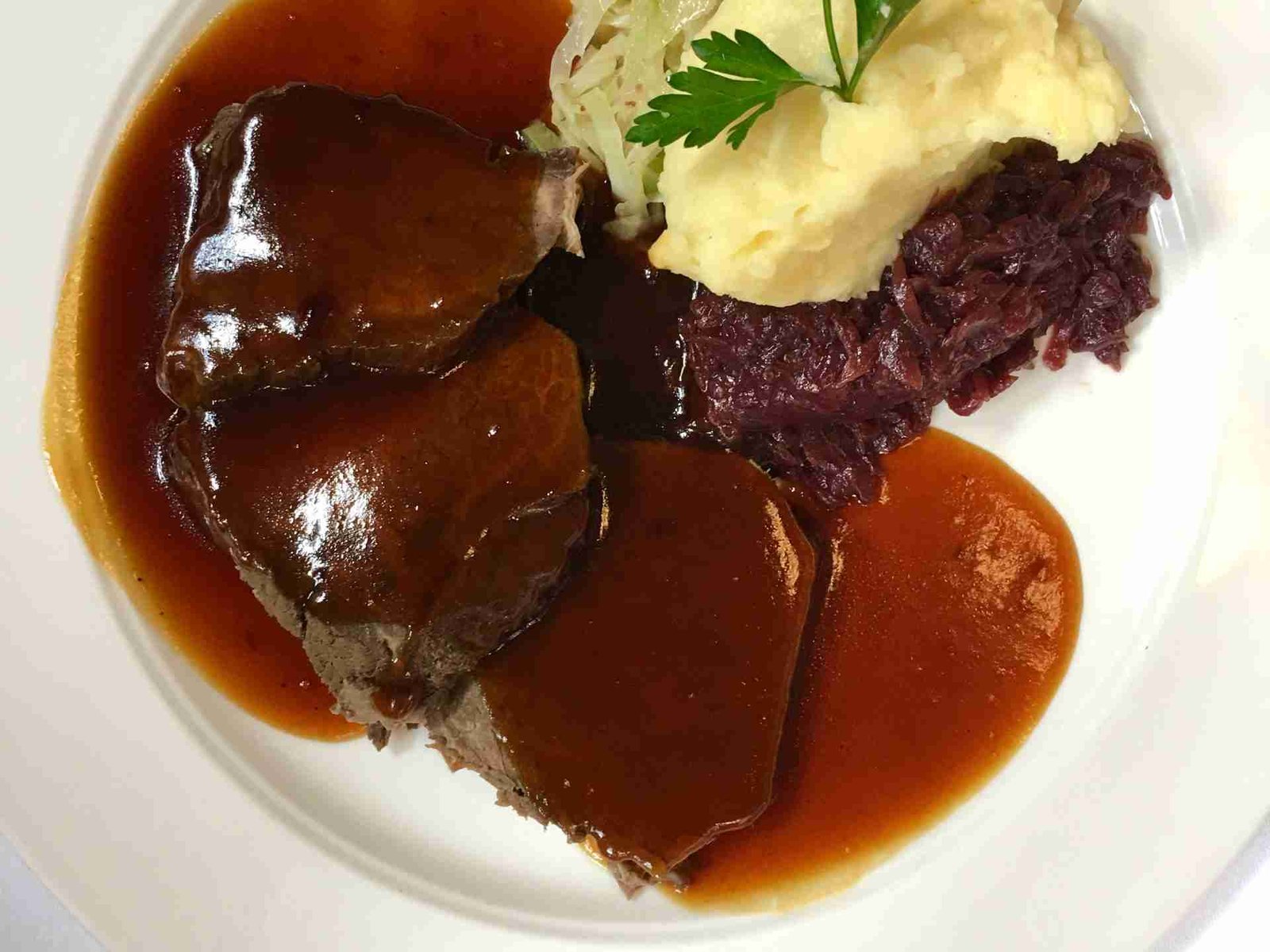
Knödel
Knödel, also known as dumplings, are a popular dish in Central European cuisine, particularly in Germany, Austria, and parts of Eastern Europe.
Knödel are made by combining cooked or raw grated potatoes, bread, or other ingredients such as semolina, flour, or even fruit, with eggs and various seasonings. The mixture is shaped into small balls or larger round shapes, which are then boiled or steamed until they become soft and tender.
Knödel can be served as a side dish or as a main course, and they often accompany meat dishes or are served with rich sauces. They come in different variations, including potato dumplings and bread dumplings, each with its own unique flavor and texture. Knödel are loved for their comforting nature and ability to complement a wide range of dishes.
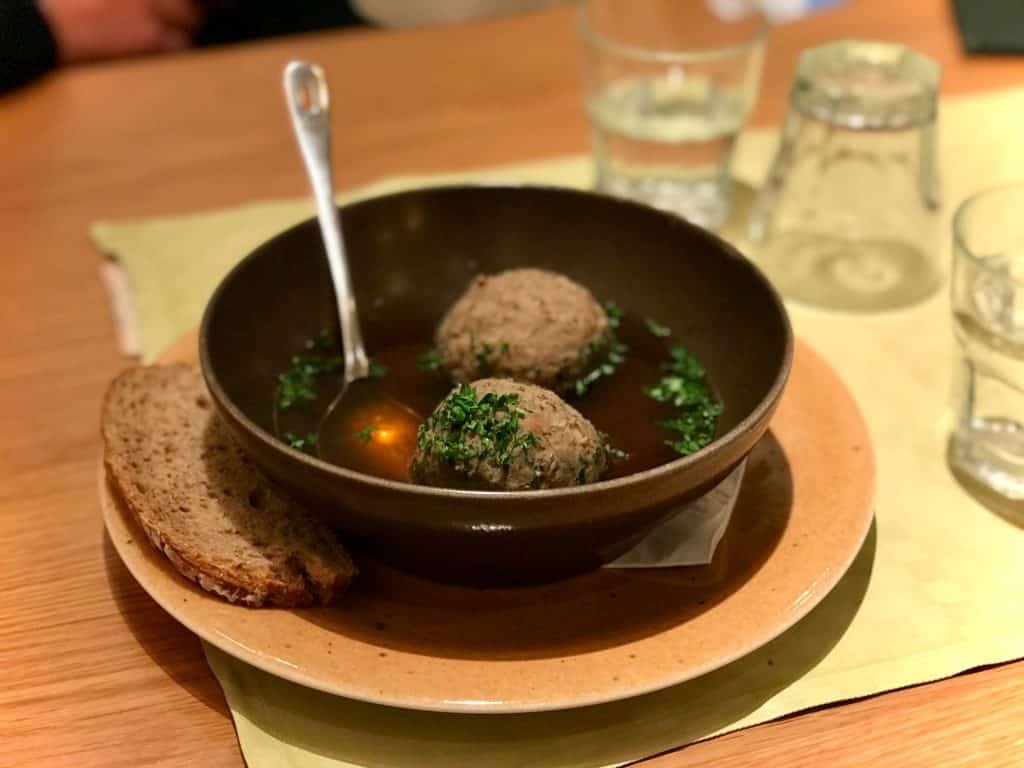
Schwarzwälder Kirschtorte
No German food without dessert!
Schwarzwälder kirschtorte, or Black Forest cake, is a decadent dessert that is named after the Black Forest region in southwestern Germany.
It consists of layers of chocolate sponge cake soaked with kirsch (cherry brandy), whipped cream, and cherries. The cake is decorated with more whipped cream, chocolate shavings, and maraschino cherries.
Schwarzwälder kirschtorte is best enjoyed with a cup of coffee or tea, or a glass of kirsch. You can find schwarzwälder kirschtorte in most bakeries and cafes in Germany, especially in Baden-Württemberg.
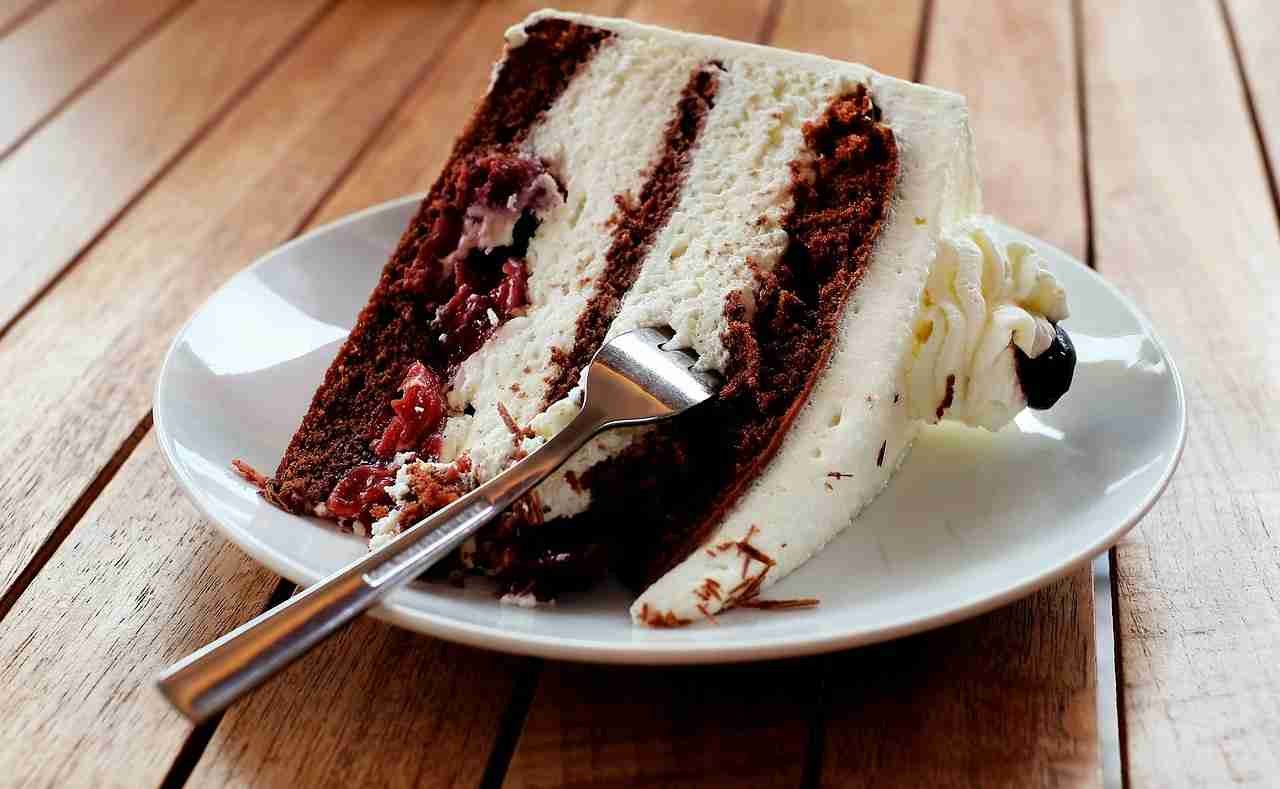
Quarkbällchen
German quark balls, also known as Quarkkrapfen, are a delightful and popular sweet treat.
These delectable balls are made from a dough consisting of quark (a type of fresh cheese), flour, eggs, sugar, and a hint of vanilla. The dough is mixed until smooth and then deep-fried until golden brown. The result is a fluffy and tender ball with a crispy outer shell. Quark balls are often dusted with powdered sugar or rolled in cinnamon sugar for added sweetness and flavor. They are commonly enjoyed as a snack or dessert, especially during carnival season or at outdoor markets. With their irresistible texture and delicious taste, German quark balls are a beloved indulgence for those with a sweet tooth.
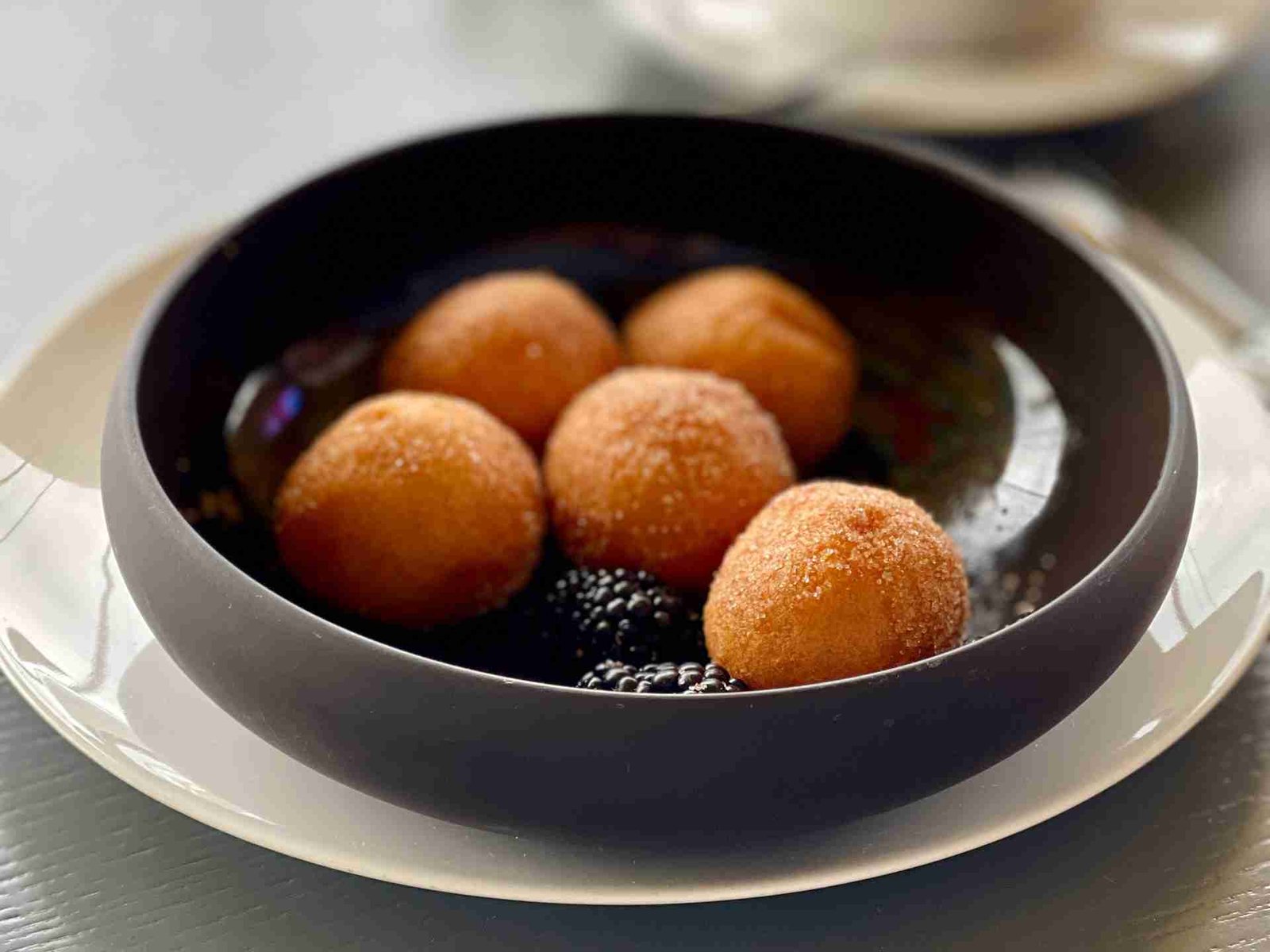
Where to eat the best traditional German food in Berlin?
Berlin offers a wide range of dining options, including many places to enjoy traditional German cuisine.
Our favorite?
Dicke Wirtin!
It is a charming restaurant in Berlin’s lively neighborhood of Prenzlauer Berg, embodying the essence of traditional German comfort food. The cozy and welcoming atmosphere invites guests to indulge in hearty and flavorful dishes that showcase the best of German cuisine.
From the iconic Currywurst to Königsberger Klopse and Schnitzel, Dicke Wirtin offers a menu filled with beloved German food classics. The warm and attentive service, combined with the rustic ambiance, creates an authentic dining experience that captures the essence of German food gastronomy, making Dicke Wirtin a beloved destination for locals and visitors alike.
Other popular establishments known for serving delicious traditional German food in Berlin:
- Zur Letzten Instanz: Established in 1621, Zur Letzten Instanz is Berlin’s oldest restaurant and a great place to experience traditional German cuisine. They serve classic dishes like Eisbein (pork knuckle), Sauerbraten (marinated pot roast), and Königsberger Klopse (meatballs in creamy sauce).
- Maximilians: Located in the trendy Kreuzberg district, Maximilians offers a cozy atmosphere and a menu featuring authentic German dishes. Try their Schweinshaxe (roasted pork knuckle), Kasseler Rippchen (smoked pork ribs), or a hearty plate of Wurst (sausages).
- Alpenstück: This charming restaurant in Mitte specializes in Bavarian and Alpine cuisine. Enjoy dishes like Obatzda (cheese spread), Käsespätzle (cheese noodles), and Rinderrouladen (beef rolls) while sipping on a selection of German beers.
- Zur Haxe: Situated near Alexanderplatz, Zur Haxe offers a warm and rustic setting to enjoy German cuisine. Their menu includes classics such as Eisbein, Schweinebraten (roast pork), and Leberkäse (meatloaf), served with a variety of side dishes.
- Scheers Schnitzel: As the name suggests, Scheers Schnitzel is a dedicated schnitzel restaurant in Berlin. They serve an array of breaded and fried schnitzel variations, including the classic Wiener Schnitzel and regional specialties.
- Lutter & Wegner am Gendarmenmarkt: a sophisticated and elegant restaurant, known for its refined atmosphere, exceptional wine selection, and exquisite classic German food and Austrian cuisine.
These are just a few options, Berlin has a vast culinary scene that caters to various tastes and preferences.
Exploring local neighborhoods and seeking recommendations from locals can help you discover more hidden gems for traditional German cuisine in the city.

Where to eat the best traditional German food in Munich?
Munich is renowned for its traditional Bavarian cuisine, offering a wide array of delicious German food dishes.
Our favorite?
Ayinger!
It is a renowned restaurant in Munich that embodies the essence of Bavarian hospitality and cuisine. Nestled in the heart of the city, it exudes a warm and inviting atmosphere with its rustic interior and traditional Bavarian decor.
Ayinger serves up a delightful array of authentic Bavarian dishes, prepared with locally sourced ingredients and accompanied by their own Ayinger beer. From classic favorites like Schweinshaxe (roasted pork knuckle) and Weisswurst (white sausage) to mouthwatering Bavarian desserts, Ayinger captures the rich flavors and culinary heritage of the region, offering visitors an unforgettable experience of traditional German dining.
Here are a couple of other highly recommended establishments where we have enjoyed excellent German food in Munich:
- Hofbräuhaus: An iconic Munich institution, Hofbräuhaus is a must-visit for experiencing traditional Bavarian cuisine. Indulge in hearty dishes such as Schweinshaxe (roasted pork knuckle), Würstl (sausages), Hendl (roast chicken), and Obatzda (cheese spread), accompanied by a stein of their famous beer. It is also here that Hitler gave his first speech to the Nazi party.
- Ratskeller: Located beneath the Munich City Hall, Ratskeller offers a historic setting to savor traditional Bavarian fare. Their menu features classics like Weisswurst (white sausage), Leberkäse (meatloaf), and various Bavarian specialties in a cozy cellar ambiance.
- Zum Franziskaner: Situated in the city center, Zum Franziskaner is a traditional Bavarian restaurant known for its authentic cuisine. Enjoy dishes like Schweinebraten (roast pork), Wurstsalat (sausage salad), and traditional Bavarian cheese spaetzle.
- Augustiner-Keller: This beer garden and restaurant provides a quintessential Bavarian experience. Delight in Bavarian classics like Haxn (pork knuckle), Schnitzel, and Wurstl along with the exceptional Augustiner beer brewed on-site.
- Wirtshaus in der Au: Located in the vibrant Glockenbachviertel district, this traditional Bavarian inn offers a cozy and welcoming atmosphere. Feast on regional specialties such as Weisswurst, Schweinshaxn, and Kaiserschmarrn (fluffy shredded pancake).
- Schneider Bräuhaus: Known for its Schneider Weisse beer, Schneider Bräuhaus is an excellent spot to enjoy Bavarian cuisine. Sample dishes like Saure Zipfel (sausages in vinegar broth), Käsespätzle (cheese noodles), and hearty meat dishes paired with their signature wheat beer.
These recommendations will provide you with a taste of traditional German food and cuisine in Munich.
Exploring local neighborhoods and seeking recommendations from locals can also lead you to hidden gems and family-owned restaurants that offer an authentic culinary experience.
Guten Appetit!
German food is a wonderful cuisine that offers something for everyone.
Whether you are a meat lover, a cheese lover, a bread lover, or a beer lover, you will find something to delight your palate in Germany. I hope this blog post has inspired you to try some of the best German food and classic dishes.
Have you been to Germany?
How many of the 10 German food staples above have you tried before?
What is your favorite and which one would you definitely recommend?
Let us know in a comment below!